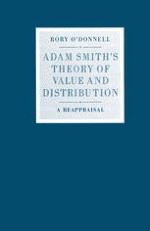1990 | OriginalPaper | Chapter
Smith as ‘General Equilibrium’ Theorist
Author : Rory O’Donnell
Published in: Adam Smith’s Theory of Value and Distribution
Publisher: Palgrave Macmillan UK
Included in: Professional Book Archive
Activate our intelligent search to find suitable subject content or patents.
Select sections of text to find matching patents with Artificial Intelligence. powered by
Select sections of text to find additional relevant content using AI-assisted search. powered by
Professor Hollander’s 1973 book The Economics of Adam Smith is perhaps the most influential modern interpretation of Smith’s work. In that book Hollander successfully challenged the idea, found in the work of Myint (1948) and Hicks (1965), that Smith’s system can be adequately represented by a simple ‘corn model’ of capital accumulation (Hollander, 1973, p. 18).1 He shows that Smith’s concern was with the possibilites of capital accumulation in a many-good economy in which markets are widespread. But there is much more to Hollander’s interpretation than this, as is demonstrated by the remarkable statement by Recktenwald, quoted above, in his survey of the bicentenary literature on the Wealth of Nations. Indeed, Hollander himself says that ‘This work is in essence concerned with the relationship between Smith’s analysis of economic development and “general equilibrium” ’ (Hollander, 1973, p. 44, and see p. 20). It is this which has attracted great attention to Hollander’s book and persuaded many scholars of the view stated by Jaffe that ‘it is precisely in Professor Hollander’s masterly treatise that we see most clearly the link between the Walrasian and Smithian theoretical systems. To reveal this link was indeed … Hollander’s purpose, as he tells us explicitly’ (1977, p. 20).
